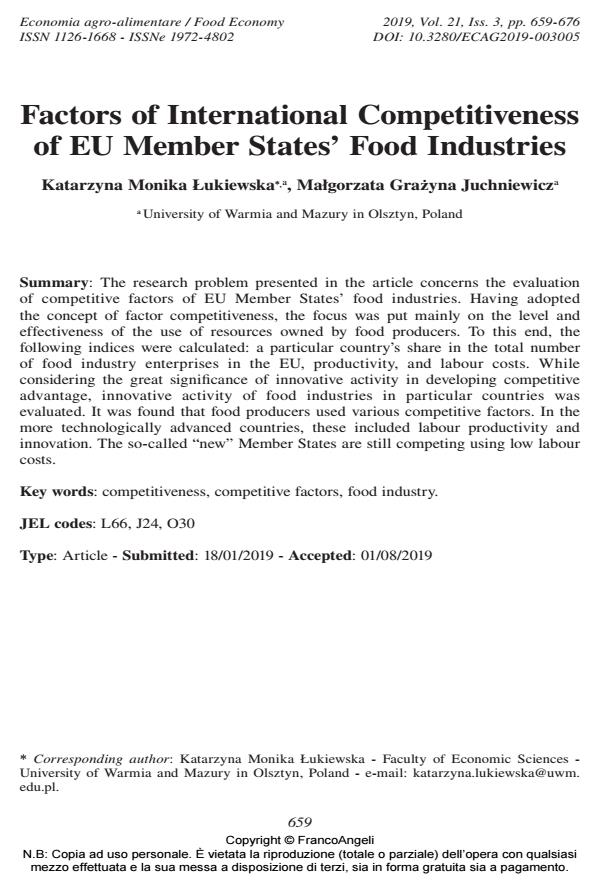Factors of International Competitiveness of EU Member States’ Food Industries
Titolo Rivista ECONOMIA AGRO-ALIMENTARE
Autori/Curatori Katarzyna Monika Lukiewska, Malgorzata Grazyna Juchniewicz
Anno di pubblicazione 2020 Fascicolo 2019/3
Lingua Inglese Numero pagine 18 P. 659-676 Dimensione file 323 KB
DOI 10.3280/ECAG2019-003005
Il DOI è il codice a barre della proprietà intellettuale: per saperne di più
clicca qui
Qui sotto puoi vedere in anteprima la prima pagina di questo articolo.
Se questo articolo ti interessa, lo puoi acquistare (e scaricare in formato pdf) seguendo le facili indicazioni per acquistare il download credit. Acquista Download Credits per scaricare questo Articolo in formato PDF

FrancoAngeli è membro della Publishers International Linking Association, Inc (PILA)associazione indipendente e non profit per facilitare (attraverso i servizi tecnologici implementati da CrossRef.org) l’accesso degli studiosi ai contenuti digitali nelle pubblicazioni professionali e scientifiche
The research problem presented in the article concerns the evaluation of competitive factors of EU Member States’ food industries. Having adopted the concept of factor competitiveness, the focus was put mainly on the level and effectiveness of the use of resources owned by food producers. To this end, the following indices were calculated: a particular country’s share in the total number of food industry enterprises in the EU, productivity, and labour costs. While considering the great significance of innovative activity in developing competitive advantage, innovative activity of food industries in particular countries was evaluated. It was found that food producers used various competitive factors. In the more technologically advanced countries, these included labour productivity and innovation. The so-called "new" Member States are still competing using low labour costs.
Parole chiave:Competitiveness, competitive factors, food industry.
Jel codes:L66, J24, O30
- Competitiveness of the Largest Global Exporters of Concentrated Apple Juice Paweł Kraciński, Paulina Stolarczyk, Łukasz Zaremba, in Agriculture /2025 pp.1197
DOI: 10.3390/agriculture15111197
Katarzyna Monika Lukiewska, Malgorzata Grazyna Juchniewicz, Factors of International Competitiveness of EU Member States’ Food Industries in "ECONOMIA AGRO-ALIMENTARE" 3/2019, pp 659-676, DOI: 10.3280/ECAG2019-003005